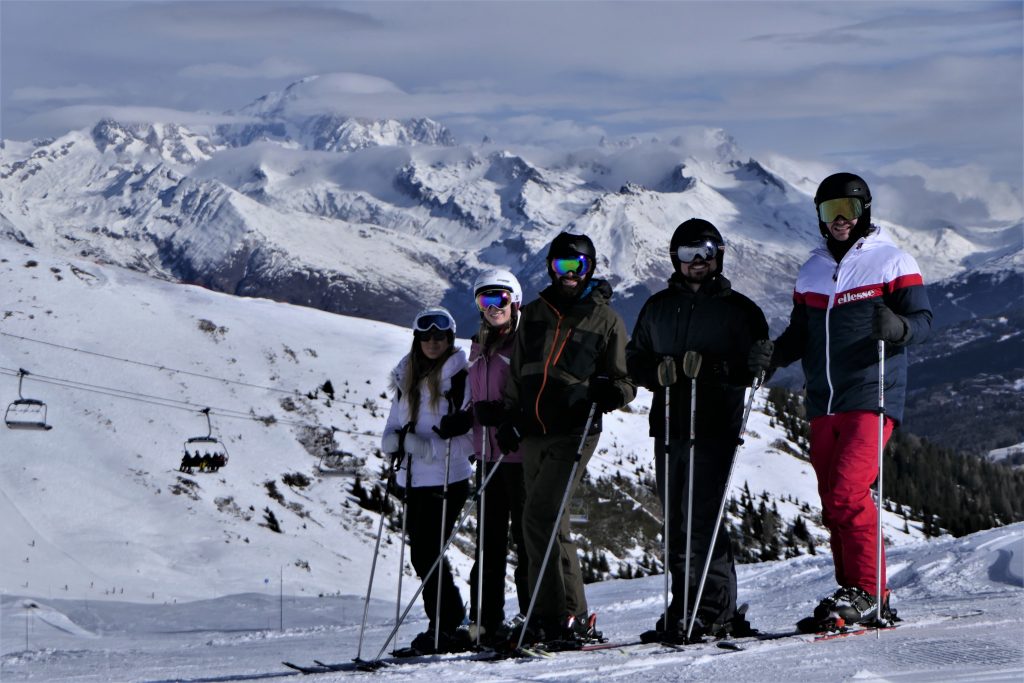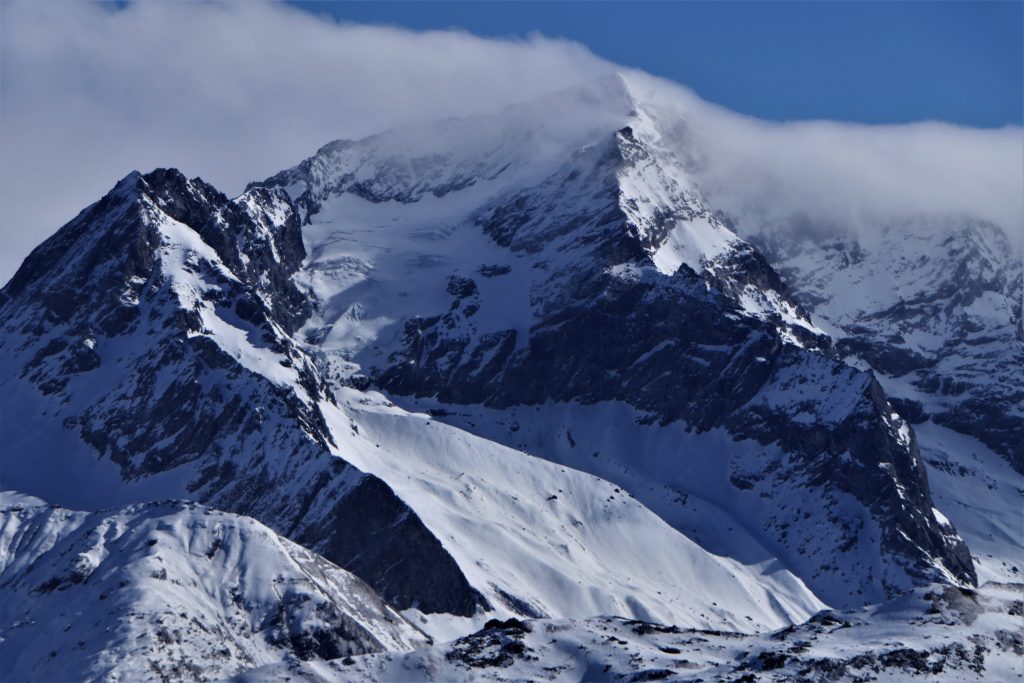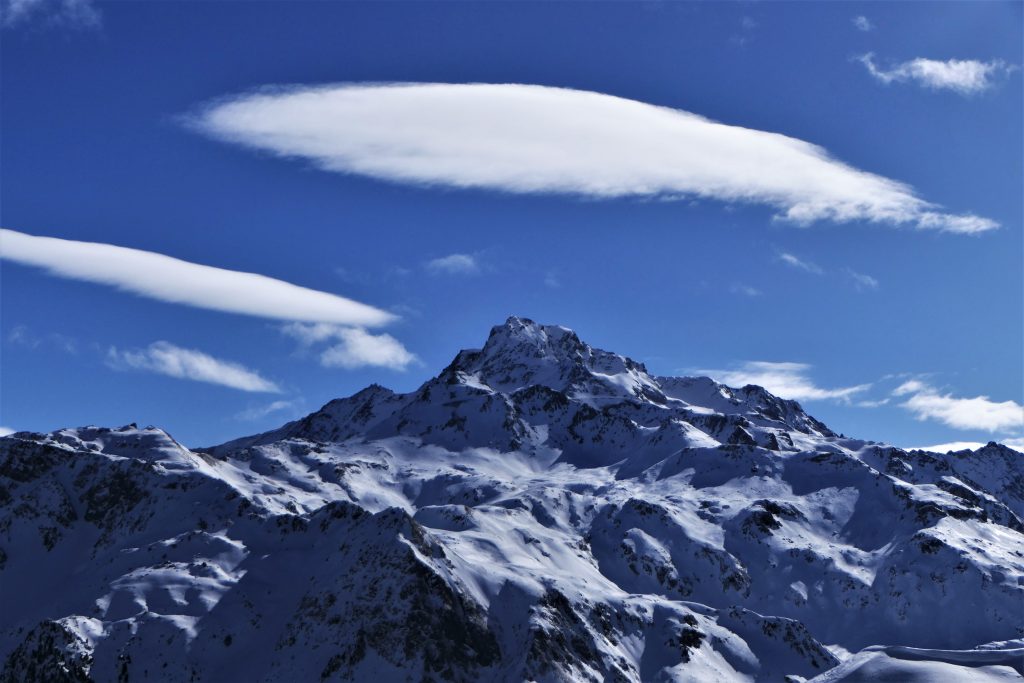Huge difference in Laura and Ben’s skiing since yesterday – all the others improved also at a fundamental level converting from stemming or heel pushing to using dynamics of the centre of mass.
Today’s Goal
Today the goal was to introduce the concept of the ski being able to travel sideways and to turn purely from sideways motion while in contact with the snow – with the eventual integration of this into our dynamics. This is to teach that it’s actually easier to initiate a turn on the outside edge of the uphill/outside ski than on the inside edge and develop improved directional and speed control on the steeps.
Note:
1 – When traversing we have an uphill and a downhill ski
2 – When turning we have an outside and inside ski relative to the turn
3 – when discussing edges there are inside edge and outside edge – always relative to the feet
For turning we would develop the pure “Pivot-Swing” – using no twisting, rotational action or torque – only controlled motion of the centre of mass. The pure Pivot-Swing is essentially an exercise – though there are times when in its pure form it is very useful.
Side Slipping
We began with side slipping – using “joy stick” control with the centre of mass. All exercises such as this – or skating – which focus on moving the centre of mass are beneficial as they lead to a progressive building of awareness of the centre of mass.
You can go from a moving sideslip – by planting the ski pole downhill of the skis and directly below the ski tails (blocking the tails from side slipping) – into a swing of the ski fronts/tips laterally into a turn.
Swing Weight
The concept of swing weight is well demonstrated in this short video clip – the lighter the ski tips the better in this respect – especially if the swing is made with the skis in the air – as is done in jump turns – commonly called “Short Swings”. We might do some of those tomorrow! Too many were complaining about painful feet today to think about trying Short Swings.
Most of the detail about the Pivot-Swing is covered with accompanying demos in the following linked page: Pivot
Here is one demo from the “Pivot” page…
The key issues in pivoting are as follows:
- The Centre of Mass (CoM) is controlled with weight on the ski pole
- Ski/s are going sideways not forward so there is no “lift” from the skis
- Unlike with free flow dynamics the CoM is actively restrained
- Like with dynamics both subtalar joints are pronated even when going both directions on one ski
- The CoM is directed between the tips of the skis and the pole
- Progressing through the turn continue to drive the CoM toward the supporting pole
- If you cannot get weight on the pole you are not coming forward enough and perpendicular
- The subtalar joint, adductor muscles and core act as one unit to pull/swing the ski front inward
- There is no twisting/torque/rotation force applied to make the swing happen
Integrating Swing/Pivot Elements into Dynamics – And String Theory (Thanks Ben!)
The target today was to reach the point where the “push” of the centre of mass into a new turn would be initiated from the uphill edge of the uphill ski – taking up the pressure on this ski very close to the end of an existing turn or even from a traverse – but always from a relaxed and flexed leg that then extends and pushes the centre of mass into a new turn. Using the uphill edge both makes it impossible for the ski to be pushed outward sideways into a stem and guarantees the CoM is moved directly.
Remember – even through this leg extends – the CoM overall goes down toward the snow during the turn and continues like this until there is full control of direction and speed. The skier almost turns back up the hill if required before ending the drive of the CoM inwards. Think of this as like in the pivot with pulling the CoM into the centre (Ski Pole) – the invisible string pulls you at first downhill into the centre and as the turn progresses the string pulls you uphill into the same centre – until YOU decide to let the ski lift and lever you out of the turn.






